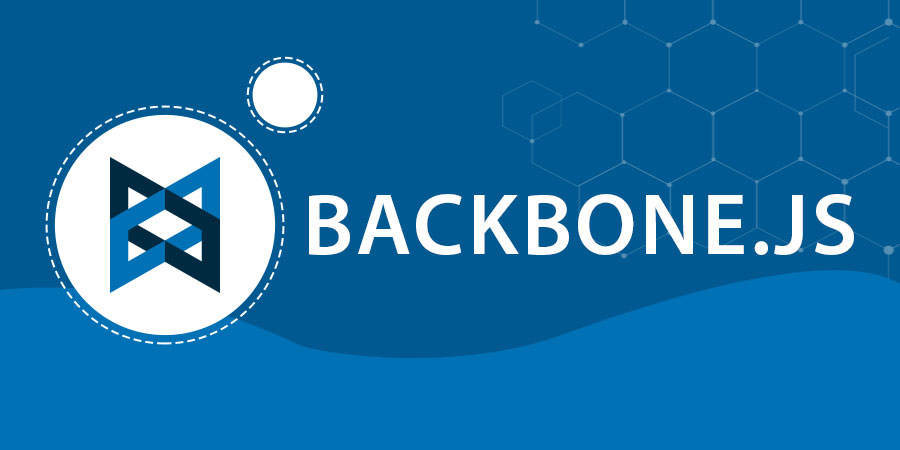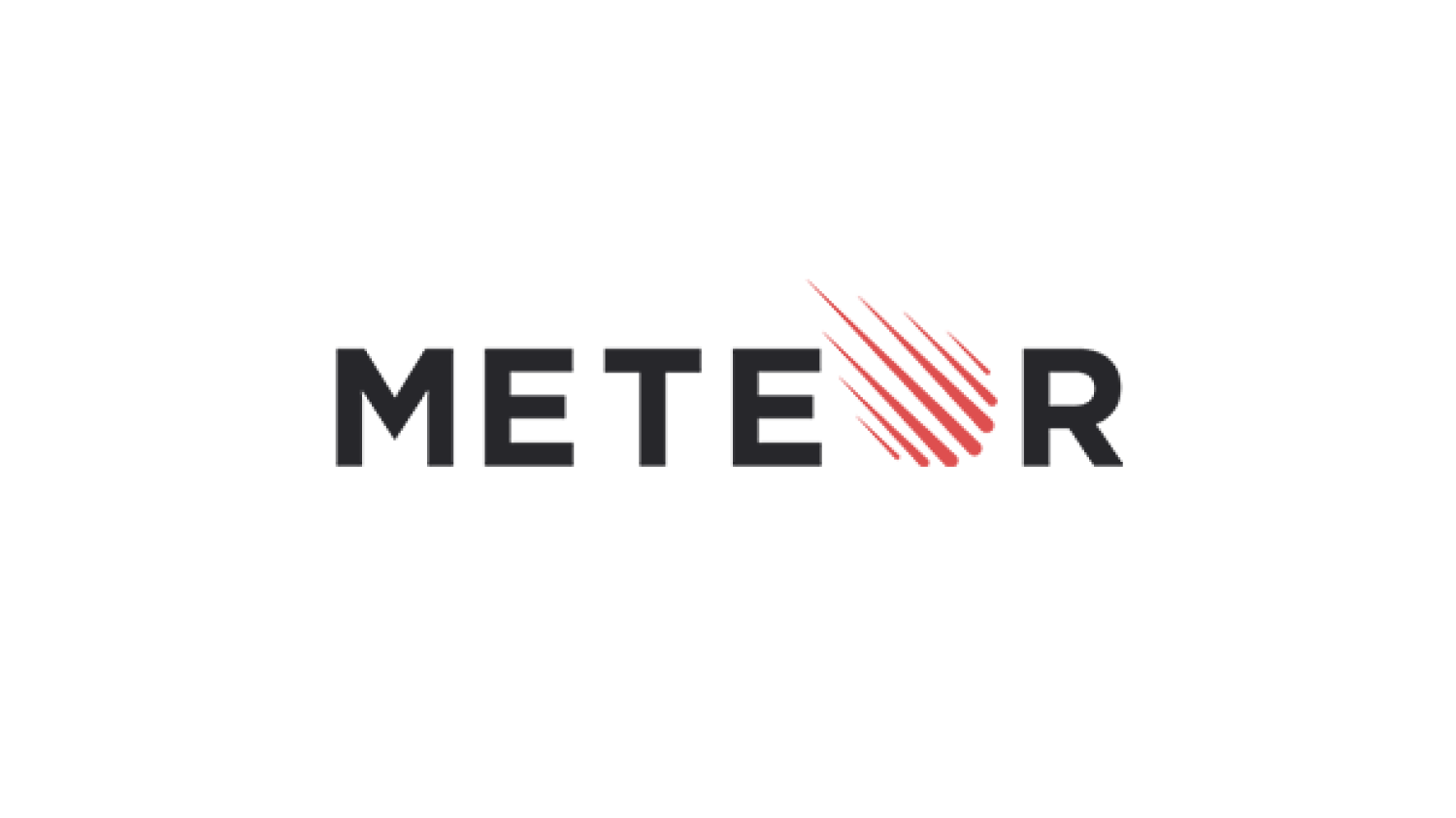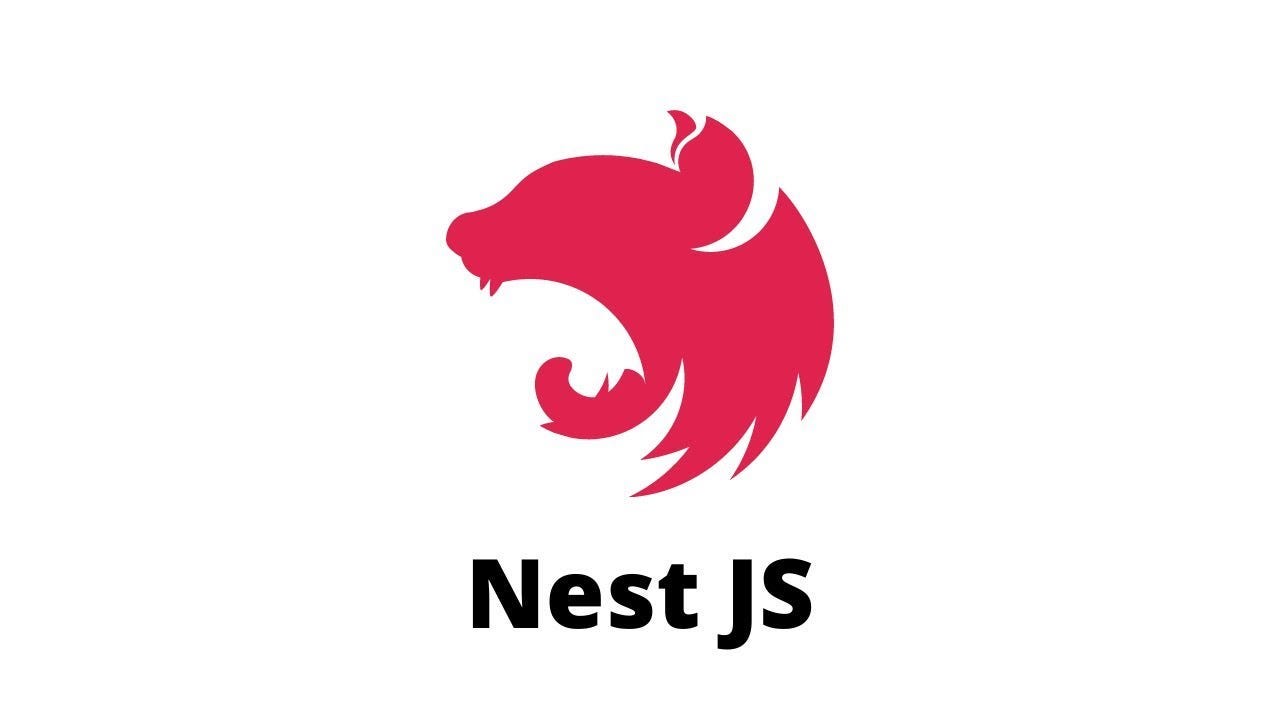The most popular JS frameworks in 2024
As the digital sphere continues its rapid evolution, JavaScript frameworks remain the cornerstone of modern web development, dictating the efficiency, functionality, and user experience of web applications.

As the digital sphere continues its rapid evolution, JavaScript frameworks remain the cornerstone of modern web development, dictating the efficiency, functionality, and user experience of web applications. With a decade of hands-on experience in the ever-shifting landscape of coding and search engine optimization, I'm thrilled to unveil the reigning champions among JavaScript frameworks in 2024.
Join me as we navigate through the top contenders, dissect their strengths that influence their prominence in today's tech-driven world.
Top 10 JavaScript Frameworks in 2024
- React.js
- Angular
- Vue.js
- Svelte
- Ember.js
- Next.js
- Meteor.js
- Nest.js
- Aurelia
- Remix
The Battle of Titans: A Glance at the Leading JavaScript Frameworks
1. React

Renowned for its component-based architecture, React.js, developed by Facebook, enables developers to build dynamic user interfaces efficiently. Its virtual DOM and reusable components have made it a favorite among developers for building single-page applications (SPAs) and large-scale projects.
Who uses React?
- React is used by companies like Facebook, Netflix, Airbnb, and countless others to build all kinds of web applications, from simple landing pages to complex dashboards and interactive experiences.
- It's a popular choice for both experienced and beginner developers due to its relative ease of learning and powerful capabilities.
Getting started with React
If you're interested in learning React, there are numerous resources available online, including:
- The official React website: https://react.dev/
- Tutorials: https://react.dev/learn/tutorial-tic-tac-toe
- Online courses: https://www.freecodecamp.org/news/tag/react/
- Books: "Eloquent JavaScript", "Pro React 17"
With a robust ecosystem and battle-tested performance, React has continued its dominance. Renowned for its versatility and scalability, this framework has evolved to cater to a diverse range of development needs. Its extensive community support and vast array of plugins and tools have solidified its position as a preferred choice for developers seeking a comprehensive solution.
1.1. Next.js

Next.js has gained substantial popularity within the React community due to its powerful capabilities, developer-friendly environment, and the ability to address various use cases ranging from simple websites to complex applications requiring advanced rendering strategies.
Here are some key aspects and features that make Next.js noteworthy:
- Server-side Rendering (SSR): One of the standout features of Next.js is its built-in support for server-side rendering. This allows React applications to render on the server before sending them to the client, enhancing performance and SEO by providing fully-rendered HTML content to search engines and users.
- Static Site Generation (SSG): In addition to SSR, Next.js offers Static Site Generation. It generates HTML at build time, enabling the creation of highly optimized, fast-loading static websites. This approach is beneficial for content-driven websites, blogs, and marketing sites.
- Automatic Code Splitting: Next.js facilitates automatic code splitting, ensuring that only the necessary code is sent to the client, thereby optimizing initial loading times and improving overall performance.
- Routing and API Routes: It simplifies client-side routing, making navigation within applications effortless. Additionally, Next.js allows the creation of API routes within the same application, enabling easy integration with backend services.
- Hybrid Applications: Next.js supports a hybrid approach, allowing developers to mix SSR, SSG, and client-side rendering based on specific page requirements. This flexibility caters to a wide range of project needs.
- Incremental Adoption: Similar to React, Next.js permits incremental adoption. It can be introduced gradually into existing projects, making it accessible for developers transitioning from other frameworks or libraries.
- Developer Experience: The framework focuses on providing a superior developer experience by reducing boilerplate code, enabling hot module replacement, and offering a straightforward configuration setup.
Who uses Next.js?
Nuxt.js is used by developers of all levels, from beginners to experienced professionals, for building a variety of web applications and websites, including:
- E-commerce sites: Nike, Doordash
- Blogs and news websites: Hashnode, Vercel Blog
- SaaS applications: Storyblok, Contentful
- Marketing websites: Lancôme, Guerlain
Getting started with Next.js
- Official website: https://nextjs.org/
- Documentation: https://nextjs.org/docs
- Tutorials: https://www.youtube.com/watch?v=fqGnxrWQUoY
- Community: https://nextjs.org/docs/community
Next.js is a powerful React framework for building full-stack web applications. It extends the core capabilities of React by offering additional features and functionalities, making it easier and faster to develop dynamic and performant web experiences.
2. Angular

Developed by Google, Angular is a comprehensive framework offering a robust ecosystem for building web applications. Its two-way data binding, dependency injection, and modular architecture make it suitable for creating complex, enterprise-level applications.
Here's a deeper dive into what Angular offers:
1. Component-based architecture
- Angular breaks down your UI into reusable, independent pieces called components. Each component encapsulates its own logic, data, and template, making your code modular and maintainable.
- Think of components as building blocks. You can combine them in different ways to create your entire application, and each block can be reused across your project.
2. Comprehensive features
- Angular provides a rich set of built-in features for routing, data management, forms, dependency injection, and more. This reduces the need for additional libraries and simplifies development.
- It's like having all the tools you need in one toolbox, ready to use out of the box.
3. Scalability and performance
- Angular is designed to handle large and complex applications with ease. Its component-based architecture and features like lazy loading help ensure smooth performance even for big projects.
- Imagine building a skyscraper. Angular provides the strong foundation and essential tools to build a robust and scalable application that can grow over time.
4. TypeScript support
- Angular is written in TypeScript, a superset of JavaScript that adds optional static typing. This helps catch errors early in your development process and improves code maintainability.
- It's like having a safety net while you're coding. TypeScript helps prevent bugs and ensures your code is more predictable and easier to understand.
5. Large community and ecosystem
- Angular boasts a vast and active community of developers and a wealth of resources, libraries, and tools available. This makes it easier to find help and support when needed.
- Think of it as having a bustling city of Angular experts around you. You can always find someone to answer your questions, share tips, and help you build amazing applications.
Who uses Angular?
- Companies like Google, Microsoft, Upwork, and Spotify use Angular to build a variety of web applications, from enterprise platforms to e-commerce sites.
- It's a versatile framework suitable for developers of all levels, from beginners building their first SPAs to experienced professionals tackling complex enterprise applications.
Getting started with Angular:
- If you're interested in learning Angular, there are numerous resources available online, including:
- The official Angular website: https://angular.io/
- Tutorials: https://angular.io/tutorial
- Online courses: https://www.udemy.com/topic/angular/
- Books: "Pro Angular", "Angular Up and Running"
A close contender in the realm of JavaScript frameworks, Angular, has carved its niche with a focus on simplicity and efficiency. Developers appreciate its minimalist approach without compromising on functionality. Its lightweight nature and seamless integration with other tools make it an appealing choice for projects prioritizing speed and performance.
3. Vue.js

Vue.js gained traction for its simplicity and ease of integration. It allows incremental adoption, making it suitable for both small and large projects. Vue's reactivity system and component-based architecture provide a smooth learning curve for developers.
Emerging as a rising star, Vue has gained traction in 2023 owing to its innovative features and forward-looking approach. Its emphasis on reactivity and real-time updates resonates well with developers working on dynamic and interactive applications. The framework's adaptability to different project scales has garnered attention, positioning it as a promising option for future-centric development.
3.1 Nuxt

Nuxt.js is a meta-framework built on top of Vue.js that makes it easier to build web applications and websites with server-side rendering (SSR), static site generation (SSG), and hybrid rendering. It's essentially a pre-configured set of tools and features that make Vue.js development faster and more efficient, particularly for complex or large projects.
Here's a breakdown of what Nuxt.js does:
1. Simplifies Vue.js development:
- Provides a pre-configured file structure and tooling, saving you time on setup.
- Offers built-in features like routing, middleware, and meta-tags, reducing the need for additional libraries.
- Enhances development experience with hot reloading, code splitting, and other features.
2. Enables different rendering modes:
- Server-side rendering (SSR): Renders pages on the server, leading to better SEO and initial page load times. This is the default mode for Nuxt.js applications.
- Static site generation (SSG): Pre-renders entire pages at build time, resulting in lightning-fast page loads but less dynamic content.
- Hybrid rendering: Combines SSR and SSG for optimal performance, where some pages are static and others are dynamic.
3. Boosts performance and SEO:
- SSR and SSG improve SEO by making your site crawlable and indexable by search engines.
- Code splitting reduces initial page load times by loading only the necessary code for each page.
- Built-in caching mechanisms further enhance performance.
4. Svelte

Known for its innovative approach, Svelte shifts much of the work to the compilation phase, resulting in highly optimized and performant applications. It abstracts away the framework in the final build, leading to smaller bundle sizes and faster load times.
Here are the key aspects and features that make Svelte stand out:
1. Reactive Declarations:
Svelte introduces the concept of reactive declarations, where variables can be marked as reactive using the $: syntax. When these variables change, components are automatically updated, eliminating the need for manual reactivity setup seen in other frameworks.
2. Reactive Assignments:
Svelte enables reactivity at a granular level by allowing reactive assignments. This means assigning a new value to a variable triggers the automatic update of components using that variable.
3. No Virtual DOM:
Unlike many other front-end frameworks, Svelte doesn't rely on a virtual DOM. Instead, it compiles the code at build time, generating highly optimized and efficient imperative code that directly manipulates the DOM, resulting in faster rendering and smaller bundle sizes.
4. Component-Based Architecture:
Svelte encourages a component-based approach to building applications, making it easy to create reusable and encapsulated components that can be used across different parts of an application.
5. Scoped Styling:
Svelte provides scoped styling for components, where styles defined within a component only affect that component, preventing unintended styling conflicts and enhancing modularity.
6. Automatic Transition Effects:
Transitioning between states or elements becomes simpler with Svelte's built-in transition capabilities. It offers a smooth way to handle animations and transitions without requiring extensive custom code.
7. Small Bundle Sizes:
Since Svelte's compiler optimizes the code during the build process, the resulting bundle sizes tend to be smaller compared to other frameworks. This is beneficial for faster load times and better performance, especially on low-bandwidth or mobile devices.
8. Seamless Reusability:
Svelte allows easy integration with existing JavaScript codebases, making it versatile and accessible for developers aiming to incrementally adopt it into their projects.
9. Ecosystem and Tooling:
While Svelte's ecosystem might not be as extensive as some longer-established frameworks, it has been steadily growing. Additionally, it offers a simple and efficient development experience with tools like SvelteKit for building applications and Sapper for server-side rendering.
10. Learning Curve:
Svelte's syntax and approach, especially with its focus on simplicity, can offer a relatively smoother learning curve for newcomers to the framework. Its intuitive nature and straightforward concepts facilitate quicker onboarding for developers.
4.1. SvelteKit

SvelteKit is a meta-framework built on top of Svelte, making it a powerful tool for building robust, performant web applications. While Svelte focuses on building user interface components.
SvelteKit takes things a step further by providing features like:
1. Routing and data fetching: Easily handle URL paths, navigate between pages, and fetch data from APIs or databases.
2. Server-side rendering (SSR) and static site generation (SSG): Choose between dynamic SSR for optimal SEO and initial load times, or statically generate pages for lightning-fast speed.
3. Built-in file system and tooling: Leverage a pre-configured file structure and tools like Vite for development and server-side rendering.
4. End-to-end type safety: Integrate TypeScript for static type checking to prevent errors and improve code maintainability.
5. Automatic data fetching and state management: SvelteKit manages data fetching and state updates in the background, simplifying development and reducing boilerplate code.
Who uses SvelteKit?
- Developers who appreciate Svelte's reactive nature and concise syntax.
- Teams looking for a performant and easy-to-maintain framework for web applications.
- Anyone who wants to build modern, SEO-friendly web experiences.
5. Ember.js

Ember.js is a popular open-source JavaScript framework used for developing web applications. It provides a complete solution for building client-side JavaScript applications and is known for its convention over configuration philosophy.
Here are some key aspects of Ember.js:
- Convention over Configuration: Ember.js emphasizes convention over configuration, meaning it provides standard ways of doing things. This approach reduces the amount of boilerplate code a developer needs to write and makes it easier to get started with default settings that are sensible for most applications.
- Component-Based Architecture: Ember uses a component-based architecture, similar to React and Vue.js, which allows for creating reusable and isolated parts of the user interface.
- Ember CLI: Ember comes with a powerful command-line interface (CLI) that simplifies many common tasks, such as creating new components, running tests, and building your application for production.
- Routing: Ember includes a robust routing system, making it a strong choice for complex applications with multiple pages and nested routes. The router helps manage application state and URL synchronization.
- Ember Data: This is a library for managing model data in Ember applications. It provides a consistent way to communicate with a server, handle data fetching, updating, and caching.
- Templates: Ember uses Handlebars templated syntax, allowing developers to effectively describe their UI declaratively. Handlebars templates are clean and easy to understand.
- Glimmer Rendering Engine: Ember uses Glimmer, a fast rendering engine that optimizes DOM updates and re-rendering, improving performance, especially in large-scale applications.
- Testing: Ember has a strong emphasis on testing, with built-in support for unit, integration, and acceptance tests. This makes it easier to write and maintain reliable applications.
- Community and Ecosystem: Ember has a supportive community and a rich ecosystem of add-ons, which can be easily integrated to extend the functionality of Ember applications.
- Two-Way Data Binding: It supports two-way data binding, ensuring that the model and view are in sync. This makes state management more straightforward.
Ember.js is particularly well-suited for ambitious web applications, as it provides a lot of functionality out-of-the-box. Its opinionated approach means that developers have clear guidelines on how to structure their applications, which can lead to more maintainable and scalable codebases. However, this can also mean a steeper learning curve compared to more minimalistic JavaScript frameworks.
6. Backbone.js

Backbone.js is a lightweight JavaScript library that provides the minimal structure needed to build web applications and single-page applications (SPAs). It's known for its simplicity and flexibility, allowing developers to create structured client-side code.
Here are some key aspects of Backbone.js:
- MVC (Model-View-Controller) Structure: Backbone.js follows the MVC design pattern, which helps in separating the application logic from the user interface. This separation facilitates easier management and maintenance of the code.
- Models: In Backbone, models are used to represent data. They can be created, validated, destroyed, and saved to the server. Models in Backbone can trigger events when their state changes, which is useful for keeping the UI in sync with the data.
- Views: Views in Backbone.js are responsible for rendering the data from models into HTML. They listen to model events and react accordingly, updating the UI when the model changes.
- Collections: A collection is an ordered set of models. You can bind events to be fired when the collection changes, such as when a model is added or removed.
- Events: Backbone.js offers a rich event system that allows models and views to communicate without having to know details about each other, promoting loose coupling.
- Router: The Backbone Router provides methods for routing client-side pages and connecting them to actions and events. This is particularly useful for SPAs where URL management is essential.
- Dependencies: Backbone.js has a dependency on Underscore.js (a utility library) and optionally depends on jQuery for DOM manipulation and Ajax calls.
- Lightweight: One of the main attractions of Backbone.js is its small size. It’s a very lightweight library, making it a good choice for projects where bandwidth usage is a concern.
- Flexibility and Simplicity: It provides the basic building blocks for web applications but doesn’t enforce any specific way of doing things, offering a lot of flexibility.
- Community and Ecosystem: Although it was more popular in the early 2010s, Backbone.js still has an active community and a range of plugins available for extended functionality.
Backbone.js is particularly well-suited for those who need a lightweight structure to organize their JavaScript code but don't require the more heavyweight features of larger frameworks like Angular or React. It's often appreciated for its simplicity and the fine level of control it offers to developers.
7. Meteor

Meteor is a full-stack JavaScript framework that enables rapid prototyping and the development of real-time applications. It includes a wide range of features, such as a data synchronization system and a built-in package management system.
It's known for its:
1. Simplicity: Meteor uses a single language, JavaScript, for both the front-end and back-end, making development faster and easier. It also provides a pre-configured environment and built-in tools, reducing the need for additional libraries and frameworks.
2. Reactivity: Meteor is built on a reactive system, meaning that changes in your data are automatically reflected across your entire application, making it dynamic and responsive. This eliminates the need for manual data binding and simplifies UI development.
3. Real-time capabilities: Meteor shines in building real-time applications with features like automatic data synchronization and pub/sub messaging. This makes it ideal for chat apps, social networks, and collaborative platforms.
4. Hot reloading: Meteor allows you to see changes in your code reflected in your browser instantly, making development faster and more iterative.
5. Built-in tools: Meteor comes with a powerful set of built-in tools for routing, data management, user accounts, and deployment, allowing you to focus on building your app without getting bogged down by infrastructure details.
Who uses Meteor.js?
- Startup teams and solo developers looking for a rapid prototyping and development framework.
- Teams building real-time applications like chat, social, and collaborative platforms.
- Developers who appreciate the simplicity and efficiency of using one language for the entire stack.
8. Nest.js

Nest.js, often simply called Nest, is a framework for building efficient, scalable Node.js server-side applications. It utilizes modern JavaScript and is built with TypeScript, though it still allows developers to code purely in JavaScript.
Here are some key features and concepts of Nest.js:
- Architecture: Nest draws inspiration from Angular, which is evident in its architecture. It uses a modular approach, which helps in organizing code logically and making it more maintainable.
- TypeScript-Based: Nest is built with TypeScript, a superset of JavaScript that adds static types. This feature helps in creating more reliable and maintainable code. However, Nest also supports plain JavaScript.
- Dependency Injection: Nest makes use of dependency injection, making it easier to manage dependencies between different parts of an application.
- Extensibility: It is designed to be extensible, allowing you to use other libraries alongside it.
- Versatility: Nest can be used for building a variety of server-side applications, such as REST APIs, GraphQL APIs, microservices, and more.
- CLI Tool: Nest comes with a powerful command-line interface (CLI) tool that helps in automating repetitive tasks like module creation, service creation, etc., which speeds up development.
- Integration: It integrates well with other Node.js frameworks, like Express.js, and supports a wide range of other libraries and tools.
Nest.js is particularly suited for developers who are familiar with Angular, but its comprehensive documentation and strong community support make it accessible to newcomers as well. Its focus on good architecture and maintainability makes it a popular choice for enterprise-level applications.
9. Aurelia

Aurelia is a modern, front-end JavaScript framework for building web applications and more complex single-page applications (SPAs). It's known for its clean and unobtrusive approach to web development.
Here are some key aspects of Aurelia:
- Conventions over Configuration: Aurelia prefers convention over configuration, meaning it tries to reduce the amount of setup and boilerplate code you have to write. If you follow certain conventions, Aurelia automatically knows how to handle your components.
- Two-Way Data Binding: It supports powerful two-way data binding. This feature automatically syncs the data between your model (data) and your view (UI), making it easier to keep them in sync.
- Extensibility and Customization: Aurelia is highly extensible, allowing developers to customize or replace almost any part of the framework's default behavior.
- Modern JavaScript: It is written with ES2016, which is a modern version of JavaScript, and fully supports modern JavaScript features, including ES2017, TypeScript, and JSX.
- Testing: Aurelia has a strong focus on testing, making it easier to write tests for your application.
- Web Standards Focused: The framework aims to stay close to web standards, meaning it doesn't force developers to use any specific programming patterns or proprietary systems.
- Routing and Composition: Aurelia provides a powerful client-side router and composition engine that helps in building complex SPAs with multiple views and routes.
- Rich Ecosystem: The framework offers a rich set of plugins and integrations with other tools and libraries, enhancing its capabilities for various development needs.
- Community and Support: Aurelia has an active community and is supported by a dedicated core team, providing regular updates and support.
- Real-world Applications: It's suitable for all types of projects, from small personal websites to large-scale enterprise applications.
10. Remix

Remix is a modern JavaScript framework for building better, faster web applications with a focus on improving user experiences. It's designed to work seamlessly with React and leverages web fundamentals to enhance both development and user experiences.
Here are some key aspects of the Remix framework:
- Server-Rendered React: Remix allows you to build server-rendered React applications. This means it can render pages on the server before sending them to the client, improving initial load performance and SEO.
- Routing: The framework has a robust routing system, which is built on the file system. Routes are defined by the file structure in your project, making it intuitive to organize your application's pages and components.
- Data Loading: Remix provides a unique approach to data loading, where you can define loaders for your routes. These loaders run on the server to fetch data, which is then passed to your components as props.
- Enhanced User Experience: By utilizing server-side rendering and optimized data loading, Remix can offer faster page loads, which significantly enhances the user experience, especially on mobile devices or slow networks.
- Optimized for the Web: The framework emphasizes leveraging standard web platform features and APIs, resulting in a more robust and maintainable codebase.
- Nested Routing and Layouts: Remix supports nested routes and layouts, allowing you to build complex applications with nested UIs more efficiently.
- Form Handling: It offers advanced form handling capabilities with automatic client and server validation, improving the development process of forms significantly.
- JavaScript and TypeScript Support: Remix works well with both JavaScript and TypeScript, offering flexibility and robustness in development.
- Community and Ecosystem: As a relatively new framework, Remix is rapidly growing its community and ecosystem, providing developers with resources, plugins, and integrations.
- Focus on Performance: Remix is designed with performance in mind, not only in terms of page load times but also in terms of runtime efficiency.
Remix aims to bring back the simplicity of traditional web development practices while leveraging the power of modern technology like React. It's suitable for developers looking for a more streamlined and efficient way to build React applications, especially those concerned with performance and user experience.
Conclusion: Navigating the Realm of JavaScript Frameworks in 2024
In this era of technological innovation, selecting the right JavaScript framework transcends mere coding preferences. The intersection of development efficiency and SEO compatibility plays a pivotal role in determining the success of web applications. While each framework boasts unique strengths and capabilities, aligning them with the project's specific requirements and SEO objectives is paramount.
As developers navigate the dynamic landscape of web development in 2024, a judicious choice among these top JavaScript frameworks, considering their technical prowess and SEO implications, lays the groundwork for crafting exceptional digital experiences. Embrace innovation, harness the power of these frameworks, and optimize for SEO to embark on a path towards delivering impactful and user-centric web solutions in this ever-evolving digital era.

